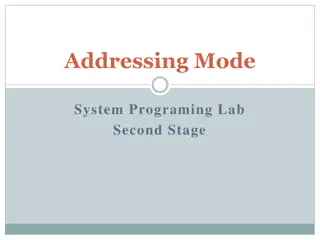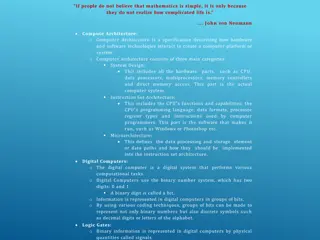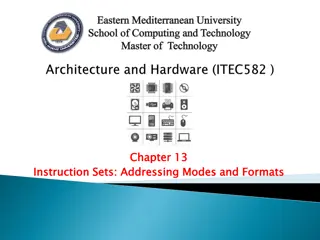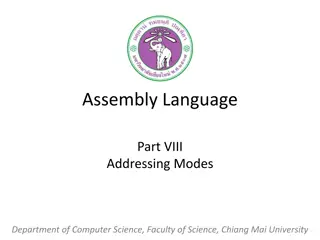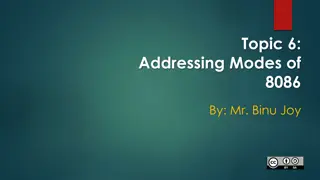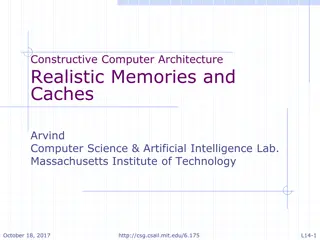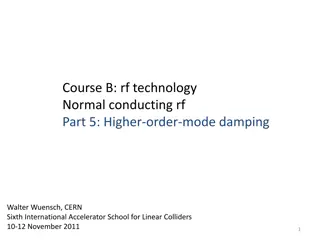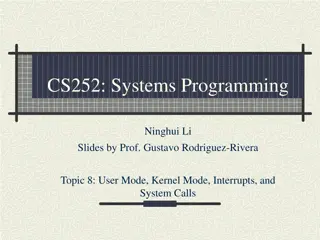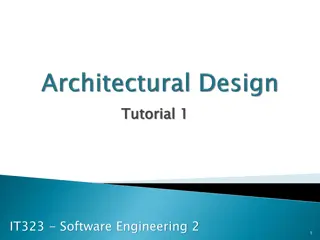Understanding Addressing Modes in Computer System Architecture
Addressing modes determine how the operand in an instruction is specified, impacting the interpretation and execution. Implied, stack, immediate, direct, indirect, register direct, register indirect, relative, indexed, base register, auto-increment, and auto-decrement are various addressing modes explained in detail with examples in the context of basic computer programming. Each mode has specific rules for locating operands within instructions, crucial for effective program execution.
Download Presentation

Please find below an Image/Link to download the presentation.
The content on the website is provided AS IS for your information and personal use only. It may not be sold, licensed, or shared on other websites without obtaining consent from the author. Download presentation by click this link. If you encounter any issues during the download, it is possible that the publisher has removed the file from their server.
E N D
Presentation Transcript
Computer System Architecture COMP201Th Unit: 3 Programming the Basic Computer Lecture: 2 Addressing Modes The term addressing modes refers to the way in which the operand of an instruction is specified. The addressing mode specifies a rule for interpreting or modifying the address field of the instruction before the operand is actually executed. Thus, the different ways of specifying the location of an operand in an instruction are called as addressing modes: 1. Implied/ Implicit Addressing Mode 2. Stack addressing Mode 3. Immediate Addressing Mode 4. Direct Addressing Mode 5. Indirect Addressing Mode 6. Register Direct Addressing Mode 7. Register Indirect Addressing Mode 8. Relative Addressing Mode 9. Indexed Addressing Mode 10. Base Register Addressing Mode 11. Auto-increment Addressing Mode 12. Auto-decrement Addressing Mode Implied Addressing Mode: In this addressing mode, the definition of the instruction itself specify the operands implicitly. It is also called as implicit addressing mode. e.g. The instruction Complement Accumulator is an implied mode instruction (CMA). In a stack organized computer, zero address instructions are implied mode instructions.
Stack Addressing Mode: In this addressing mode, the operand is contained at the top of the stack. e.g. ADD This instruction simply pops out two symbols contained at the top of the stack. The addition of those two operands is performed. The result so obtained after addition is pushed again at the top of the stack. Immediate Addressing Mode: In this addressing mode, the operand is specified in the instruction explicitly. Instead of address field, an operand field is present that contains the operand. e.g. ADD 100 will increment the value stored in the accumulator by 10. MOV R #20 initialized register R to a constant value 20. Direct Addressing Mode: In this addressing mode, the address field of the instruction contains the effective address of the operand. Only one reference to memory is required to fetch the operand. It is also called as absolute addressing mode.
Indirect Addressing Mode: In this addressing mode, the address field of the instruction specifies the address of memory location that contains the effective address of the operand. Two references to memory are required to fetch the operand. Register Direct Addressing Mode: In this addressing mode, the operand is contained in a register set. The address field of the instruction refers to a CPU register that contains the operand. No reference to memory is required to fetch the operand.
Register Indirect Addressing Mode: In this addressing mode, the address field of the instruction refers to a CPU register that contains the effective address of the operand. Only one reference to memory is required to fetch the operand.


![❤Book⚡[PDF]✔ The Apollo Guidance Computer: Architecture and Operation (Springer](/thumb/21611/book-pdf-the-apollo-guidance-computer-architecture-and-operation-springer.jpg)




